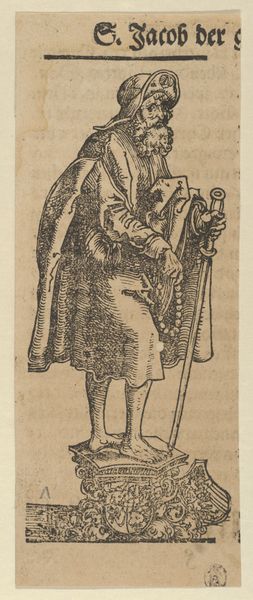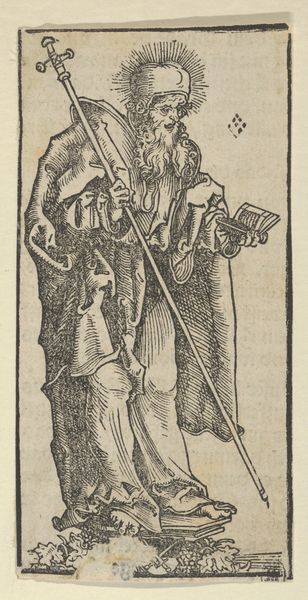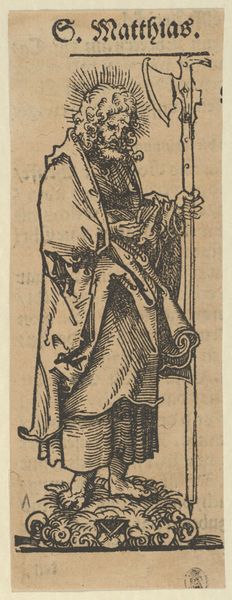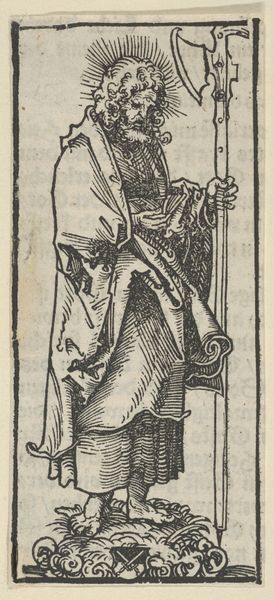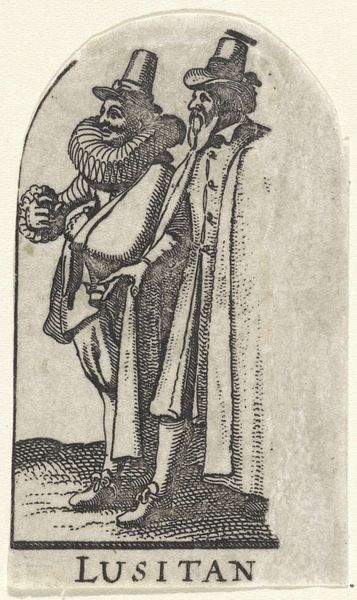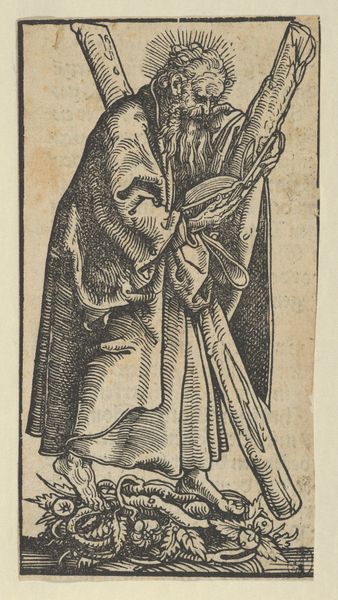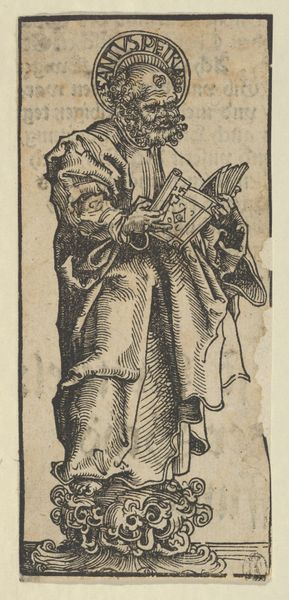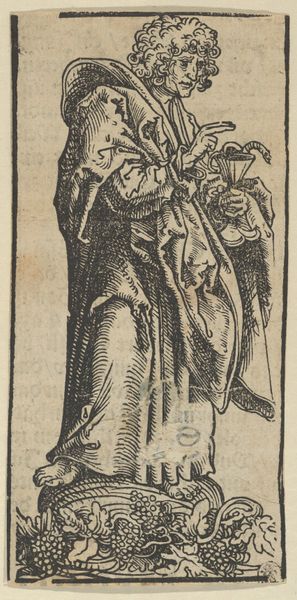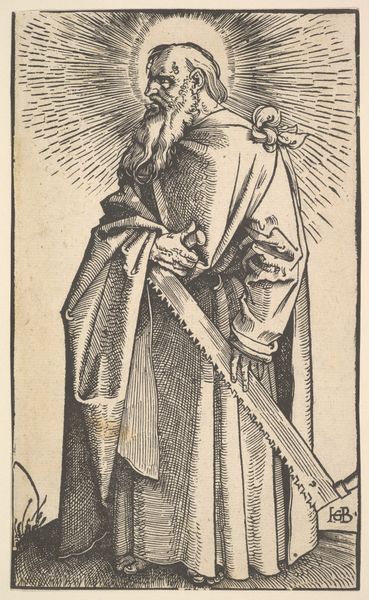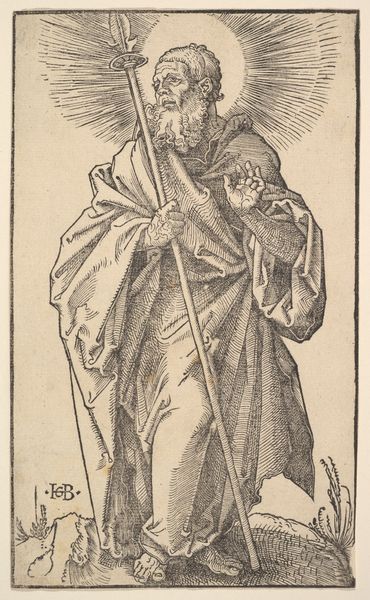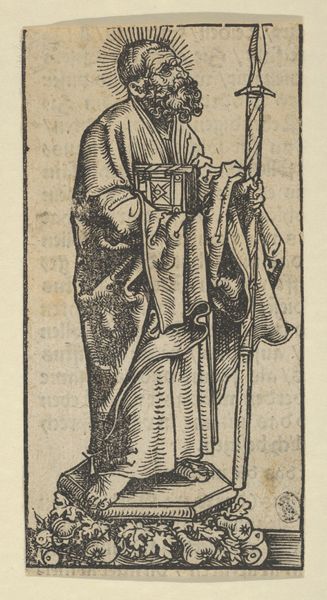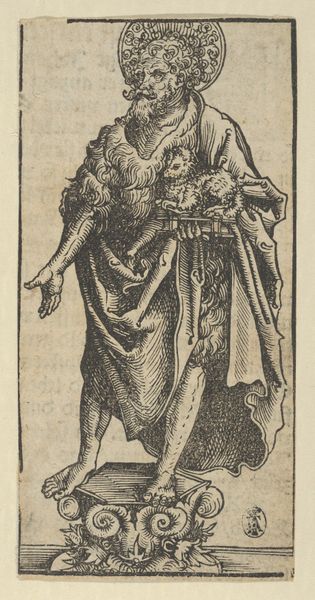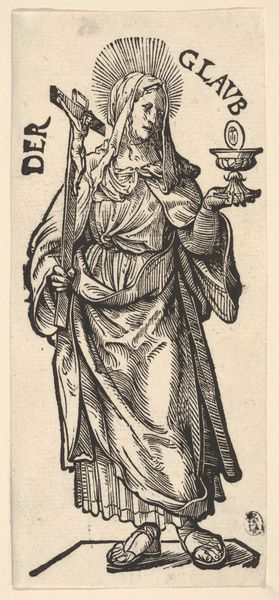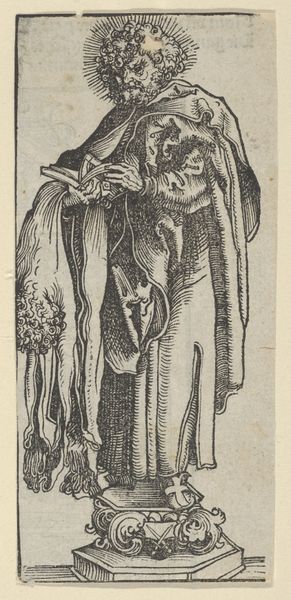
Silver Statuette of St. James the Greater, from the Wittenberg Reliquaries 1472 - 1553
0:00
0:00
drawing, print, engraving
#
drawing
# print
#
figuration
#
history-painting
#
northern-renaissance
#
engraving
Dimensions: Sheet: 5 1/8 × 2 3/8 in. (13 × 6 cm)
Copyright: Public Domain
Editor: This is a small engraving entitled "Silver Statuette of St. James the Greater, from the Wittenberg Reliquaries" dating between 1472 and 1553. It's attributed to Lucas Cranach the Elder. The figure stands on a highly decorated pedestal, and he is holding a sword, book, and rosary beads. I’m curious to hear how you interpret the artist’s decisions in creating this image, given its historical context? Curator: The image needs to be understood within the seismic shifts of the Reformation. Cranach was a close friend of Martin Luther. Notice how the Saint stands barefoot atop a crest featuring iconography that suggests worldly power. What statement do you think the artist is making by presenting St. James this way? Editor: Well, putting a religious figure on a crest of nobility seems almost subversive. Perhaps Cranach is commenting on the power of the Church? Curator: Precisely! This work is an act of resistance through representation. Cranach challenges the very foundation of religious authority by subverting symbols of power, in this case, nobility, the crest upon which he stands. Consider how printing made images like this widely accessible; it's a potent act of dissidence, democratizing religious commentary through art. The Reformation allowed questioning everything and demanding change. Editor: It’s fascinating to see how art can become such a vital form of protest, and how context informs so much. Curator: Indeed, and in doing so, it can become such a potent mirror to societal power dynamics. The piece really does reveal so much about art’s potential to reflect and resist historical change.
Comments
No comments
Be the first to comment and join the conversation on the ultimate creative platform.
